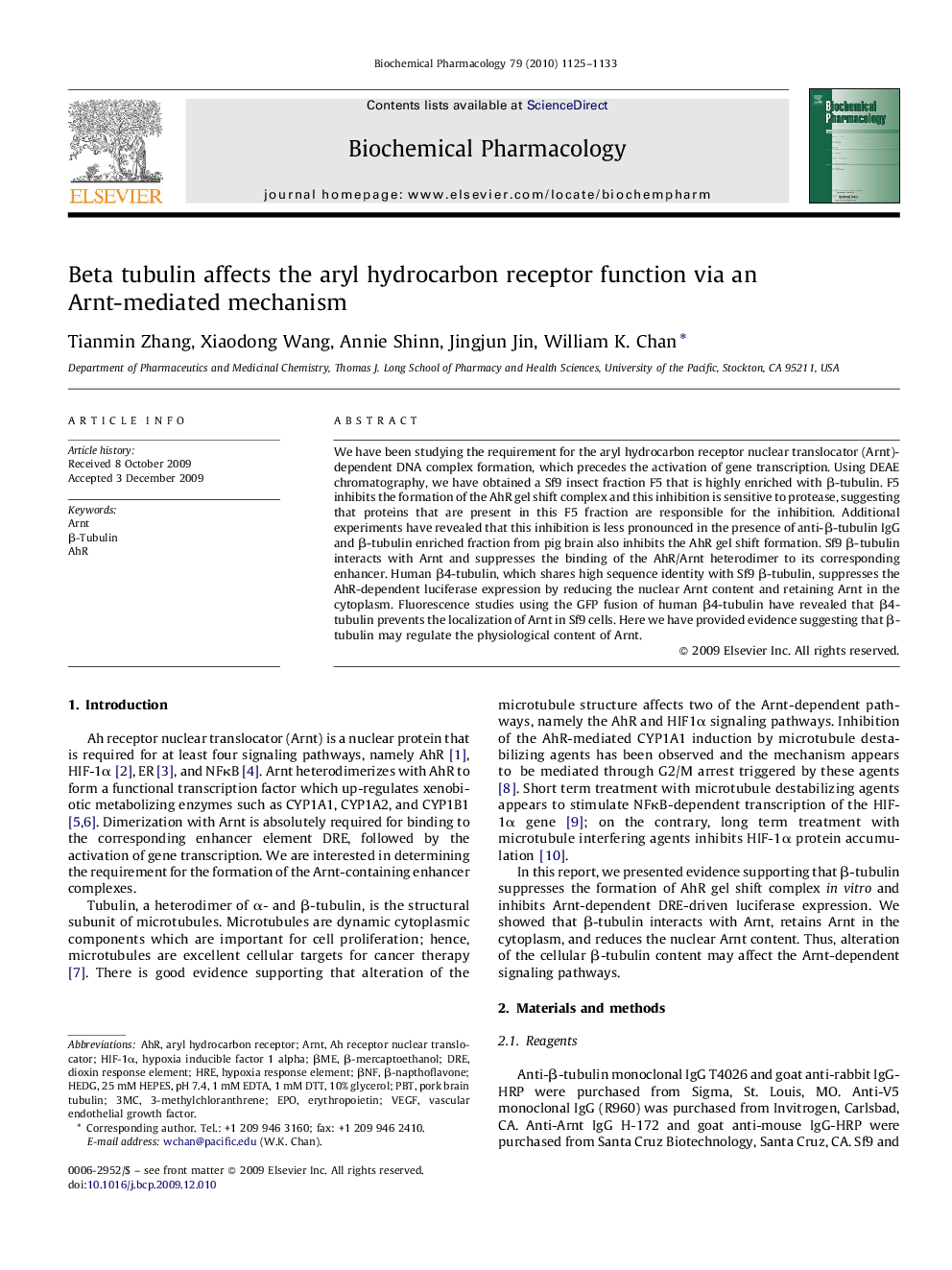| Article ID | Journal | Published Year | Pages | File Type |
|---|---|---|---|---|
| 2513538 | Biochemical Pharmacology | 2010 | 9 Pages |
Abstract
We have been studying the requirement for the aryl hydrocarbon receptor nuclear translocator (Arnt)-dependent DNA complex formation, which precedes the activation of gene transcription. Using DEAE chromatography, we have obtained a Sf9 insect fraction F5 that is highly enriched with β-tubulin. F5 inhibits the formation of the AhR gel shift complex and this inhibition is sensitive to protease, suggesting that proteins that are present in this F5 fraction are responsible for the inhibition. Additional experiments have revealed that this inhibition is less pronounced in the presence of anti-β-tubulin IgG and β-tubulin enriched fraction from pig brain also inhibits the AhR gel shift formation. Sf9 β-tubulin interacts with Arnt and suppresses the binding of the AhR/Arnt heterodimer to its corresponding enhancer. Human β4-tubulin, which shares high sequence identity with Sf9 β-tubulin, suppresses the AhR-dependent luciferase expression by reducing the nuclear Arnt content and retaining Arnt in the cytoplasm. Fluorescence studies using the GFP fusion of human β4-tubulin have revealed that β4-tubulin prevents the localization of Arnt in Sf9 cells. Here we have provided evidence suggesting that β-tubulin may regulate the physiological content of Arnt.
Keywords
HREβ-napthoflavoneβMEHEDGβNF3MCDREAHRARNTHIF-1αPBTβ-tubulinEPOβ-mercaptoethanolerythropoietinhypoxia inducible factor 1 alphadioxin response elementhypoxia response elementVascular endothelial growth factorVascular Endothelial Growth Factor (VEGF)Ah receptor nuclear translocatoraryl hydrocarbon receptor
Related Topics
Health Sciences
Pharmacology, Toxicology and Pharmaceutical Science
Pharmacology
Authors
Tianmin Zhang, Xiaodong Wang, Annie Shinn, Jingjun Jin, William K. Chan,
